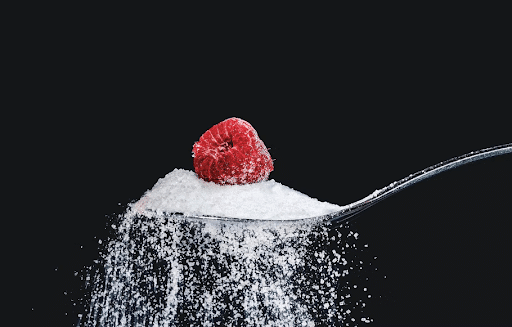Switching Sugars: When to Divert From the Recipe For Health and Taste Preference
Have you ever looked at a recipe and thought “surely not — surely I can’t use that much sugar”? Sometimes, just reading a recipe that calls for an entire cup of white sugar is enough to make your teeth hurt.
Fortunately, you don’t necessarily need to include white or brown sugar in every recipe. There are plenty of alternative options to help maintain your diet or simply take a break from the intoxicating taste of sugar.
Sugar and Your Health
You probably know that too much sugar is bad for your health. Excessive sugar consumption can lead to all kinds of conditions like diabetes, heart disease, and even some cancers. Eating too much sugar is also a quick way to gain unwanted weight, as sugar that can’t be used for energy will be stored in adipose fat cells instead.
Eating excessive amounts of sugar can also derail your day in the short term, too. Sugar is a quick-burning energy source which means that, like paper on fire, your body will make short work of the sugar and crave something more. Technically, this happens because your body produces insulin to break down the incoming energy. When the sugar has been broken down, your blood sugar level will drop beyond a normal state and cause you to crash.
Eating too much sugar also has an impact on your appearance. The bacteria that live in your mouth love feasting on the sugar left over from sugary snacks and drinks. Over time, feeding these little monsters excess sugar will lead to cavities and tooth decay. Too much sugar can also have an inflammatory impact on your body, which may worsen some conditions and make your skin look older at a young age.
Deciding to Cut Sugar
If sugar was packaged like cigarettes and came with a list of side effects, it’d be enough to put almost everyone off. Tooth decay, diabetes, and sudden drops in energy make sugar sound like a poison rather than a treat.
However, it’s important to note that the negative health consequences of sugar usually only apply when you’re consuming an excessive amount of sugar. Unfortunately, millions of us are consuming an excessive amount due to the prevalence of sugar in drinks, snacks, and even salad dressings.
Making the decision to cut down on sugar is tricky. You can make a better decision about sugar by using the Kepner-Tregoe decision-making matrix. The Kepner-Tregoe model requires you to make responsible decisions based on rational thinking rather than the rumbling in your stomach. Try to analyze the situation fully, and be willing to actually use sugar in some situations like family parties when you really need to follow a tried-and-true recipe.
Stevia Substitutions
Stevia is a zero-calorie sweetener that comes from the Candyleaf (or, Rebaudiana) plant. As well as reducing your overall sugar intake, substituting with stevia can help you regulate your blood sugar, lower some inflammation, and may help with weight loss. Stevia also contains plant-based antioxidants which may reduce stress in your body and improve recovery.
Cooking with stevia usually yields mixed results — particularly if you’re just trying to substitute stevia for sugar directly. That’s because sugar isn’t just a sweetener. Sugar actually breaks down and caramelizes during the baking process, which can help improve the taste and binding of your baked goods.
Fortunately, you can find stevia granulated sweeteners which can replace sugar with a 1:1 ratio. You’ll still need to experiment a little before you put out a range of stevia desserts at Thanksgiving, but there’s nothing wrong with replacing the sugar required for desserts like cinnamon rhubarb cake with stevia.
You can also use stevia in drinks instead of sugar. Stevia is particularly good in cocktails like margaritas or tea, and replacing the sugar in your drinks is a sneaky way to bring down your overall consumption — you may even prefer the taste!
Other Low Sugar Solutions
Stevia is a relatively new product, and many folks in the food industry are excited about its potential. However, stevia isn’t your only option when looking for a way to replace sugar.
Choosing fruit-based desserts like orange popsicles or watermelon pizza is a great way to satiate your sweet tooth while getting your five-a-day. Choosing fruits over refined sugar is good for your health, too, as fruits are packed with fiber and a range of vitamins and minerals. Fruit only contains a small amount of fructose to produce their sweet flavor, so pay no attention to folks who say that fruits are just as bad as cookies or cakes.
Conclusion
Sugar is in everything. From ketchup to iced tea, refined sneaky sugars find their way onto our plates and into our drinks every mealtime. However, you can intentionally switch sugars and avoid toothache by opting for more fruit-based desserts and opting for Stevia-based sweeteners whenever possible.



Comments are closed.